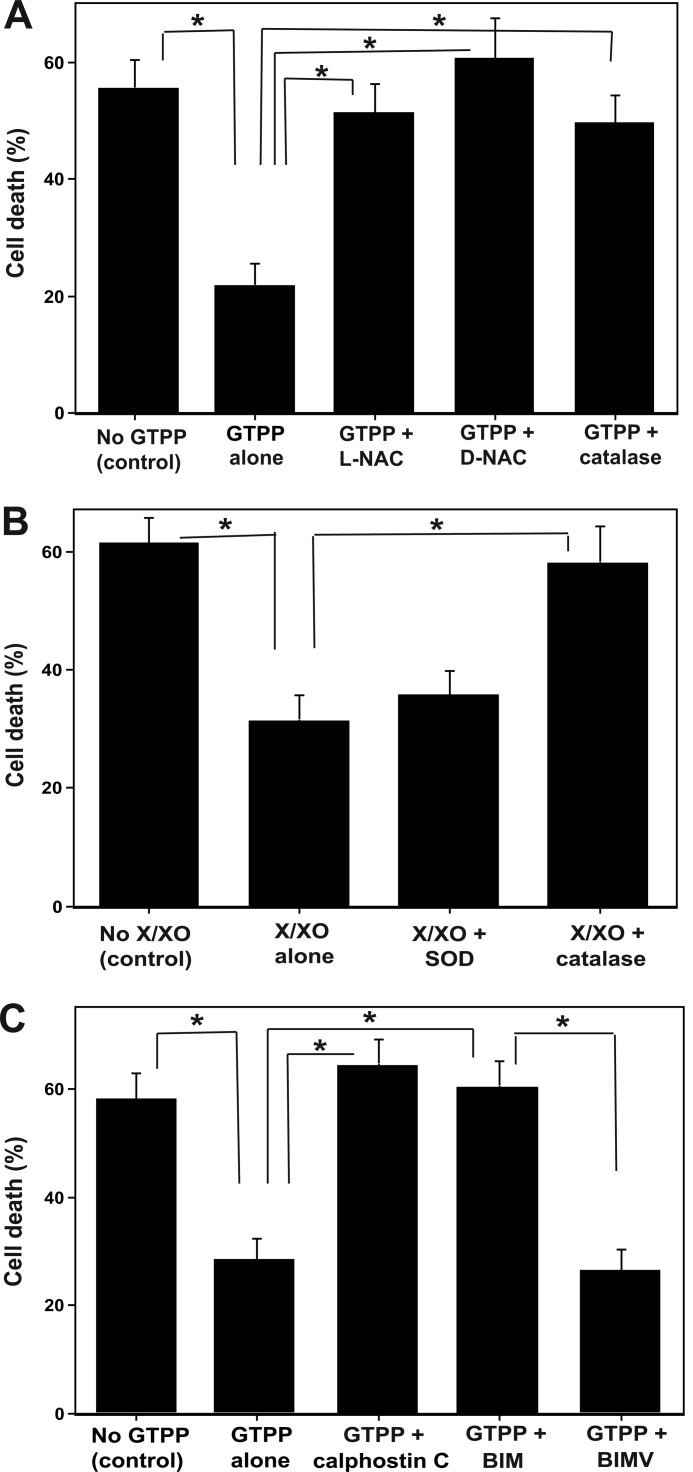FIGURE 4.
Antioxidants block GTPP-induced preconditioning, exogenous ROS induces preconditioning, and pan-PKC inhibitors inhibit GTPP-induced preconditioning. A, antioxidants block GTPP-induced preconditioning. PC12 cells were pretreated with GTPP (0.2 μg/ml) along with 5 mm l-NAC, 5 mm d-NAC, or cell-permeable catalase (PEG-catalase, 125 units/ml) for 2 days. Control cells were not treated with GTPP or antioxidants. Then, all sets of cells were subjected to OGD/R, and cell death was determined by LDH release. B, shown are exogenous ROS-generating system preconditions against OGD/R-induced cell death. PC12 cells grown on 96-well plates were pretreated with an xanthine/xanthine oxidase (X/XO) ROS-generating system (100 μm xanthine and 1 milliunit/ml of xanthine oxidase) for 3 h. Then, the medium was replaced with fresh medium. This step was repeated on the second day. In some wells, superoxide dismutase (40 units/ml) or catalase (500 units/ml) were added during xanthine/xanthine oxidase treatment. After 2 days of xanthine/xanthine oxidase treatment, all cells were subjected to OGD/R. C, pan-PKC inhibitors inhibit GTPP-induced preconditioning. PC12 cells were pretreated with GTPP (0.2 μg/ml) along with pan-PKC inhibitors, 50 nm calphostin C, 1 μm BIM, or 1 μm BIMV (a negative control for BIM) for 2 days and then subjected to OGD/R. Control cells were not pretreated with GTPP or PKC inhibitors. The values are shown as the mean ± S.E. for three experiments. Statistical difference between means is indicated with asterisks (*, p < 0.01).

